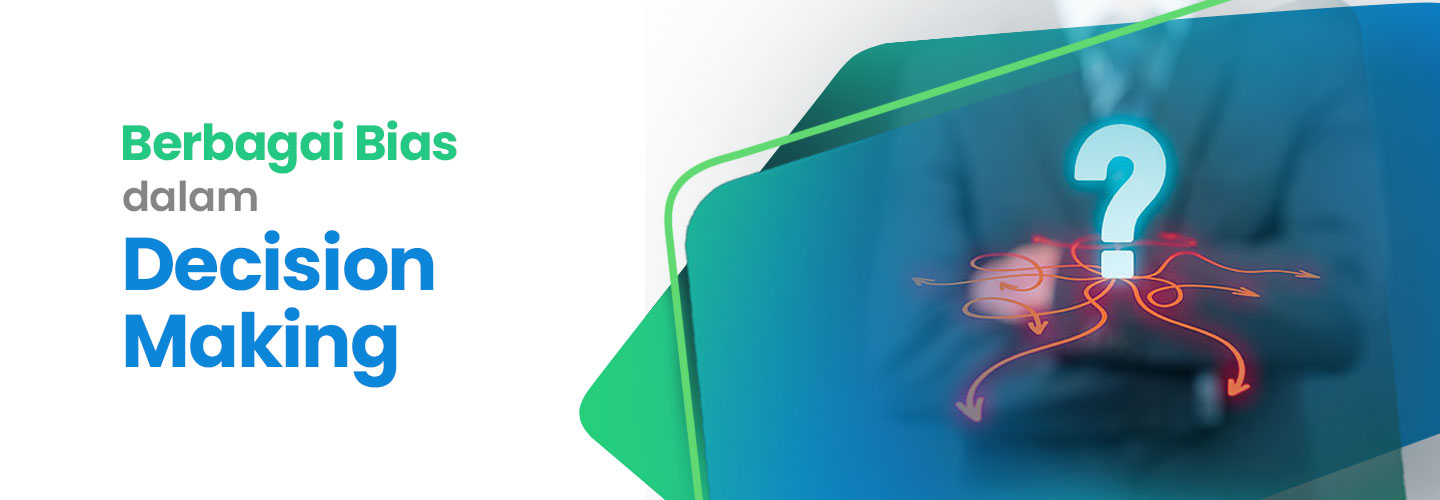Know the Types of Decision Making Bias in Business

Making the right decisions is the way to achieve company targets. To make the right business decisions, an objective perspective is needed. Having objectivity to judge a decision is challenging because many factors can influence the decision-making process.
One of the factors that determine the decision-making process is bias or prejudice. This makes it difficult for you to think objectively, even though an objective and clear perspective is needed so that you can develop a business.
Definition of Decision Making Bias
According to the Big Indonesian Dictionary (KBBI), bias means the tendency to support or oppose something, person, or group in an unfair way. Decision making bias or aspects of bias in decision making means a decision-making process that is unfair, illogical, or not objective.
Decision making should be done as objectively as possible in order to provide maximum benefits for the company. There are some things you may not be aware of so understanding the factors of bias is also important.
Types of Decision Making Bias
Bias can be avoided by identifying factors that can influence a decision. This allows anyone to be objective in making a decision. The following are some types of decision making bias that need to be understood.
1. Survivorship Bias
Survivorship bias is a mindset that only focuses on success without looking at the failure process of a business. This type of bias is harmful to the long-term viability of the company.
Corporate leaders who have this type of bias tend to be overly optimistic. Usually, there will be an assumption that all decisions taken will have a positive impact.
In order to avoid this bias, you can look at the data and facts in the field comprehensively and thoroughly. This step can help you to make the right decision.
2. Confirmation Bias (Confirmation Bias)
Confirmation bias is a mindset that only uses a piece of information to support a certain assumption or perspective. In confirmation bias, the data and information used have been filtered so that only information that is considered to support an assumption is used.
Meanwhile, in making decisions, you should use all available data and facts. This bias can be avoided by changing the thought process. Analyze all information and data first before making a decision.
3. Overconfidence Bias (Effect of Overconfidence)
Overconfidence bias is a mindset that considers your contribution to be the most important in advancing the company. When overconfident, a person tends to find it difficult to be able to see the situation objectively.
This mindset ignores the contributions of other staff and does not appreciate the performance of others. As a result, decision making is not appropriate because it does not include all staff or team members.
To avoid this, give appreciation for the performance of your colleagues and staff well. See that the company's success is the result of the work of a team, not one individual.
4. Anchoring Bias or First Impression Bias
Anchoring bias is a situation where a person is 'stuck' by the information he receives for the first time. This aspect of bias makes a person closed-minded and unwilling to accept new information. As a result, the decisions taken are the result of an analysis of irrelevant or current information.
This type of bias is common. In this dynamic modern era, a company leader is required to be able to make decisions quickly. That's why decisions are often made when they don't have complete information.
5. Planning fallacy
Planning Fallacy is the mindset of a person in a situation of underestimating the amount of time needed to complete a job. When planning, people have a tendency to think of the best-case scenario. Factors beyond control are not considered when planning.
In order to avoid this bias, include factors that can delay the completion of a job. That way, planning and decision making can be prepared more maturely. In addition, allow time lag between jobs for maximum execution.
6. Availability Heuristic
Availability heuristic is a person's tendency to prioritize the idea or choice of solutions that appear first in his head. This type of bias limits a person from seeking a solution. Making it too dependent on one idea alone, without critical thinking.
This is common because it saves a person's time in thinking and making decisions. To avoid this bias, make it a habit to think critically and stay open to new ideas that will emerge.
7. Progress Bias (Progress Bias)
Progress bias is a mindset that overestimates a positive performance and underestimates a negative performance. This type of bias can make someone make the wrong decision even though the situation they are experiencing is not as good as they think.
To avoid progress bias, listen to input from your team or company staff. This will allow you to see the situation from multiple perspectives and give you a more objective picture of the company.
Corporate executives must be able to consider opportunities and make decisions quickly. Through the Problem Solving & Decision Making program, participants will be trained to make decisions that are able to solve problems quickly without causing potential problems in the future.